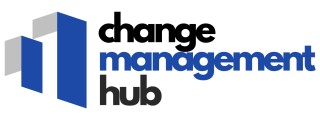
Understanding the Role of Change Management in Contact Centers
The Importance of Adapting Change Management in Marquee Contact Centers
In the fast-paced world of call centers, adapting effective change management strategies is crucial to maintaining excellent service quality and customer satisfaction. Change management isn't just a catchphrase; it's a robust framework tasked with steering changes while minimizing disruptions to various operations. By understanding the pivotal role of change management, organizations can enhance their customer interactions, optimize agent performance, and improve their overall management processes.
Incorporating change management in contact centers plays a significant role in boosting agent performance through improved quality assurance and performance management. Emphasizing continuous training, coaching, and development fosters an environment where agents are prepared for any operational shifts. This not only enhances the real-time customer experience but also ensures that every customer interaction is monitored for quality assurance.
Call monitoring and advanced management software solutions help maintain compliance and assurance by providing insights into agent interactions and service quality. These insights are invaluable for performance management as they enable real-time adaptations and adjustments in strategies, ultimately leading to improved customer service.
Furthermore, exploring how outboarding plays a key element in change management is essential for successful transitions in contact centers. Learn more about its role here. As businesses face an ever-evolving landscape, adopting tailored change management processes helps assure not only day-to-day compliance but also long-term success.
Identifying Key Challenges in Contact Center Quality Management
Pinpointing Core Obstacles in Quality Management
Tackling quality management within contact centers is no small feat. These environments are ripe with challenges that require intelligent and strategic approaches to overcome effectively. Here we delve into the significant hurdles that often impede the smooth operation and quality assurance in these bustling hubs of customer service.
Common Struggles in Ensuring Consistent Quality
- High Volume of Interactions: Managing the sheer volume of customer interactions can be daunting. This often leads to inconsistencies in service quality and agent performance, where some interactions may not meet the established quality criteria.
- Variance in Agent Skills: Within any call center, agent skill levels can vary dramatically, which may impact contact center quality. Training and coaching are crucial but coordinating this consistently can become a challenge.
- Complexity of Customer Needs: Customers' needs are diverse and constantly evolving. Ensuring agents have quality assurance measures in place while keeping up with these changing demands can strain resources.
- Data Management and Insights: Leveraging call monitoring and speech analytics technologies to derive real-time insights from contact center interactions is formidable. Ensuring these insights align with performance management objectives is essential yet tough to continuously achieve.
- Adherence to Compliance: Maintaining compliance with industry standards and regulations while providing top-notch customer service requires ongoing effort and vigilance, adding another layer of complexity to quality management.
Overcoming Challenges with Strategic Solutions
While these hurdles are characteristic of contact centers, they are not insurmountable. The focus on mastering continuous process improvement ensures that quality assurance can be effectively managed and improved over time. Through strategic planning and implementation of robust management practices, empowered by technology and a commitment to excellence, contact centers can navigate these challenges efficiently and enhance their service quality.
Strategies for Implementing Change in Contact Centers
Navigating Implementation for Improved Performance
Implementing change management strategies in a contact center is crucial for enhancing quality and achieving desired outcomes. This process requires a comprehensive approach, encompassing a range of factors that impact customer interactions and service delivery. One of the first steps is to ensure effective communication with all stakeholders involved in the contact center, including managers, agents, and even customers. Clear messaging about the objectives and benefits of the changes helps to align everyone towards a common goal of quality improvement. Strategic Approaches- Assessing Current Processes: Before making changes, it’s essential to analyze existing systems within the contact center. This includes call monitoring procedures, quality assurance protocols, and customer interaction workflows. Gathering insights from these existing frameworks can provide valuable data to guide the change process.
- Training and Coaching: Equipping agents with the necessary skills through targeted training and coaching is vital. This boosts agent performance and ensures compliance with quality standards. Focusing on real-time coaching can enhance overall service quality and customer satisfaction.
- Utilizing Management Software: Leveraging advanced management software solutions can streamline the transition. This includes tools for performance management, speech analytics, and contact monitoring, all of which contribute to greater center quality and improved customer experience.
Measuring Success: Key Performance Indicators for Quality Management
Evaluating Progress with Specific Metrics
In contact centers, measuring success is crucial to ensure the effectiveness of implemented changes. Monitoring performance through various metrics allows for a comprehensive evaluation of how change enhances quality.
Assessment Through Key Performance Indicators
Key Performance Indicators (KPIs) serve as invaluable tools in assessing changes within call and contact centers. These KPIs include
- Customer Satisfaction Score (CSAT): This directly reflects the quality of customer service interactions and is essential for assessing agent performance.
- Net Promoter Score (NPS): By measuring customer loyalty, this score offers insights into overall service quality and potential areas for improvement.
- First Call Resolution (FCR): A higher FCR indicates effective communication and contact center quality, reducing the need for follow-up calls.
- Average Handling Time (AHT): This tracks the efficiency of customer interactions, highlighting areas for performance management and agent coaching.
- Compliance Rate: Ensures that interactions adhere to established protocols, maintaining customer trust and standards.
Enhancing Monitoring Systems and Technologies
Advanced monitoring systems and technologies play a pivotal role in real-time quality management. With management software, call monitoring, and speech analytics, contact centers can gather data-driven insights to enhance agent performance.
- Real-Time Call Monitoring: Offers immediate access to live interactions, allowing for timely interventions and quality assurance.
- Speech Analytics: Analyzes conversations for insights into customer needs and compliance issues, facilitating proactive service enhancements.
- Performance Management Tools: Enable detailed tracking of contact center performance, supporting coaching and improvement strategies.
Successfully implementing and measuring these metrics allows contact centers to refine quality management processes, ultimately translating into an improved customer experience and elevated service standards.
The Human Factor: Engaging Employees in Change Management
Engaging the Workforce for Improved Quality Management
The success of change management in contact centers hinges significantly on the participation and engagement of employees. This involvement is especially critical when aiming to elevate the quality of customer interactions and enhance service delivery. Employee buy-in is essential, as it facilitates smoother transitions and cultivates a work environment conducive to continuous improvement. To engage agents effectively, consider the following approaches:- Transparent Communication: Keeping agents informed about upcoming changes in management and the reasons behind them fosters trust. Openly discussing how these changes will impact contact center operations paves the way for a more receptive attitude among staff.
- Involving Agents in the Change Process: Inclusion can significantly boost morale and ownership. When agents participate in crafting solutions or giving feedback, it empowers them to contribute positively to quality improvements within the call center.
- Training and Development: Equipping agents with the necessary skills and knowledge is pivotal. Training sessions aimed at enhancing quality assurance, call monitoring, and compliance help agents understand the value of new procedures or management software being integrated.













